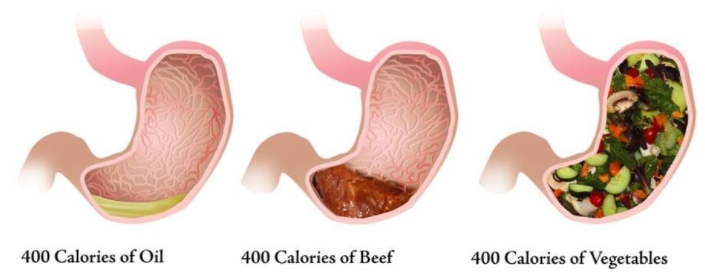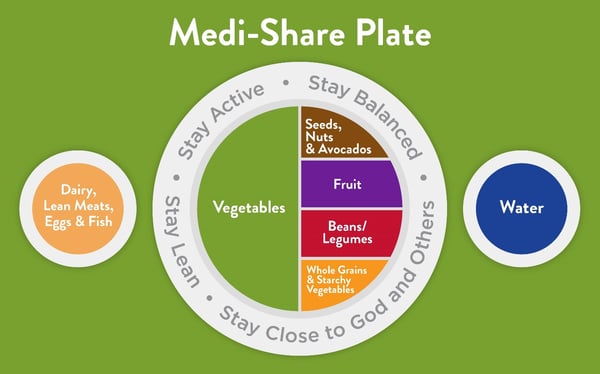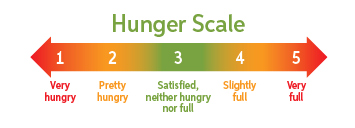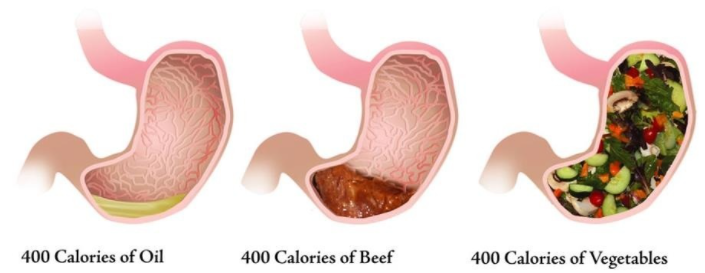Think of the last meal you ate in a restaurant. Do you think the plate it was served on was larger or smaller than your dinner plate at home? Do you think portions served were bigger or smaller than what you normally serve at home?
Odds are they were larger and bigger! Not to mention the enticing bread or chip basket served beforehand (I’m pretty sure you aren’t doing that at home!).
The fact is serving sizes have significantly grown over the years, especially in restaurants and pre-packaged foods, and the obesity rate in America has increased right along with it.
Serving Size vs. Portion Size
Did you know that serving size is not necessarily the same as the recommended portion size? Take a bottle of soda pop for example. You might buy a single bottle of soda and easily drink the whole thing, and never notice on the label that it “serves 2.5 people.” Oops! Same thing with a small bag of chips, trail mix, or a bag of candy.
The serving size is up to the person dishing out the food or packaging the food. The portion size consumed is completely within each individual’s control, and should be determined by his or her unique nutritional needs.
Once a meal or snack is served, it is then your prerogative to decide how much you need to eat at that sitting.
How Much Should I Eat?
What specific portion sizes are right for you depends on several variables. Age, gender, height, weight, activity level, and your weight goal all matter when determining how much you need to eat. What you are eating also makes a big difference as well. For example, you can eat unlimited non-starchy vegetables, but calorie-dense foods like meat, nuts, cheese, and hummus will need to be more closely measured out.
It is most important to pay attention to portion size when eating foods that are not nutrient-dense. For example, desserts, chips, candy, butter, and sugary beverages do not supply very much nutrition at all, and portions should be small, limited in frequency, and thoughtfully measured.
Prioritize Nutrition
The healthier your food choices are, the more you can eat! Think of the volume of vegetables and fruits you can eat for 400 calories versus the volume of meat, dairy, fat, or starch for an equal 400 calories.

The truth is if you prioritize what you eat and aim to get a variety of vegetables (4-6 cups per day), fruits, beans, lean proteins, and plant-based fats each day, then portion size tends to take care of itself. One easy method to help with determining proper portion sizes is to use the “Plate Method.” Medi-Share recommends trying a plant-based, nutrient-dense plate method, like this:

God-Given Tool
Did you know God gave each of us a tool to help us determine how much to eat? Babies actually use it best! God gave us innate internal hunger and fullness cues. Hormones are released based on blood sugar level and stomach contents to trigger a brain signal letting you know when it’s time to eat and when it’s time to stop eating. Isn’t God amazing? If you are listening for these fullness signals (and using the Medi-Share plate method), portion sizes should naturally align to your current needs.
So what happened? Why do many people start to ignore their true hunger and fullness cues? Here are some possible reasons:
- Eating too fast
- Eating in response to emotions
- Habit
- Social settings or peer pressure
- Dieting or following very restrictive rules and restrictions
- Exhausted or lack of self-awareness (too tired to care)
- Distracted (watching TV, driving, or working while eating)
Try using this hunger scale before, during, and after meals to help you get back in tune with your God-given hunger cues.

So how much should you eat? Well, it depends on what you are eating (remember you can eat a lot of veggies!), and your personal nutritional needs and weight goals. Ultimately, it requires you to slow down and learn to recognize and respect your innate hunger and fullness cues.
For more information, log into the Medi-Share Member Center to access our Wellness Library!
“So whether you eat or drink or whatever you do, do it all for the glory of God.” – 1 Cor. 10:31






